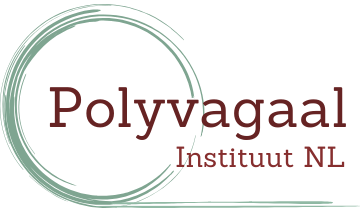Wetenschappelijke papers en artikelen
The vagal paradox: A polyvagal solution, by Stephen W. Porges, in the journal Comprehensive Psychoneuroendocrinology,
Volume 16, https://doi.org/10.1016/j.cpnec.2023.100200 (August 2023).
Autonomic state: A neurophysiological platform for feelings, emotions, and social engagement, published in Encyclopedia on Early Childhood Development (September 2022).
Revolutionizing Addiction Treatment with The Felt Sense Polyvagal Model™, by Stephen W. Porges and Jan Winhall, published in International Body Psychotherapy Journal (Spring/Summer 2022).
Neuromodulation Using Computer-Altered Music to Treat a Ten-Year-Old Child Unresponsive to Standard Interventions for Functional Neurological Disorder, published in The Harvard Review of Psychiatry, May 26, 2022.
This case study describes a young girl with Functional Neurological Disorder (FND), which includes a complex set of comorbid symptoms. Polyvagal Theory, and Dr. Porges’ auditory program, the Safe & Sound Protocol (SSP), provide, respectively, a neurobiological framework for the discussion and an effective intervention to reduce symptoms.
Polyvagal Theory: A Science of Safety by Stephen W. Porges published in Frontiers in Integrative Neuroscience (May 10, 2022).
Research article published in Infancy Journal, September 2021: Associations between acoustic features of maternal speech and infants’ emotion regulation following a social stressor: This study looks at how the sound of mothers’ voices predicted change in infant autonomic state and distress levels after a stressor
The COVID-19 Pandemic is a Paradoxical Challenge to Our Nervous System: A Polyvagal Perspective
The polyvagal theory provides insight into mitigating the threat of COVID-19 on our physical and social wellbeing.
Love: an emergent property of the mammalian autonomic nervous system.
The paper proposes a hypothetical model to explain that the evolution of the mammalian polyvagal states is related to the emergence of two components of intimacy: courtship and the formation of enduring pair-bonds.
Orienting in a Defensive World: mammalian modifications of our evolutionary heritage. A Polyvagal Theory.
The paper proffers the Polyvagal Theory to explain how the vagus nerve of the mammalian autonomic nervous system regulates the heart in response to stressors and induces certain psychophysiological states.
The Polyvagal Theory: phylogenetic substrates of a social nervous system.
The polyvagal theory proposes a deeper understanding of adaptive social-emotional behavior based on a phylogenetically developed hierarchy of autonomic nervous system states.
The Polyvagal Theory: phylogenetic contributions to social behavior
Building on Paul MacLean’s contributions to social and evolutionary psychology, the Polyvagal Theory advances the theoretical proposition of the role of the vagus nerve in the neural regulation of typical and disordered visceral states and social behavior.
The Infant’s Sixth Sense: awareness and regulation of bodily processes
The body’s sixth sense, interoception is the sensing of internal bodily process and organs to support homeostasis through internal physiological mechanisms (Level 1), autonomic nervous system regulation from external challenges (Level 2), observable motor behavior (Level 3), and social interaction (Level 4). By measuring the vagus nerve, the proposed mechanism of interoception, we can better understand the conscious and unconscious static and shifting internal states of infants.
The Polyvagal Perspective
This paper provides an explicit description of the polyvagal theory and proposes the theory as a integrative perspective for interpreting, refining, and building research on the relationship between autonomic nervous system function and biobehavioral processes.
Vagal Tone and the Physiological Regulation of Emotion
The vagal circuit and cardiac vagal tone are proposed to play a physiological role in emotional regulation and prompt additional research on the influence of the parasympathetic nervous system on emotion.
Emotion: An Evolutionary By-Product of the Neural Regulation of the Autonomic Nervous System
The scientific propositions of Darwin, Jackson, and MacLean provide the conceptual basis for the polyvagal theory. Similar to Jackson’s theory of dissolution in which a higher nervous system function regulates the lower until diseased, the polyvagal theory posits that the nervous system prioritizes more advanced neural function when responding to environmental threat in pursuit of survival.
Neurocardiology through the Lens of Polyvagal Theory
The polyvagal theory offers a framework to advance neurocardiology in mammals. From reptiles to mammals, the bidirectional vagal pathways between the heart and brain mediate visceral states, facial expression, neural regulation, and social behavior.
Hoofdstukken
The Vagus: A mediator of behavioral and physiologic features associated with autism. Observations of autistic behaviors, facial expressions, and physiologic responses suggest challenges with the social engagement system and tendency towards defensive behaviors of mobilization and immobilization. This implicates the vagus nerve in the pathophysiology of autism including the dysregulation of the HPA Axis, the gut, and the immune system.
The Polyvagal Hypothesis: Common mechanisms mediating autonomic regulation, vocalizations, and listening. An application of the Polyvagal Theory to interpret the involvement of mammalian vocalization in reciprocal communication, socialization, and adaptive survival behavior. Acoustic features, neural regulation, and middle ear anatomy are considered in this polyvagal hypothesis.
Vagal Pathways: Portals to Compassion. Porges conceptualizes how ancient and ritualized contemplative practices such as chanting, prayer, meditation, and dance employ breathing, vocalization, and posture to shift into a physiological state mediated by the vagus nerve that enhances health and subjective experiences.
Boeken
The Polyvagal Theory: Neurophysiological Foundations of Emotions, Attachment, Communication, and Self-regulation (Norton Series on Interpersonal Neurobiology), Stephen W. Porges
Clinical Applications of The Polyvagal Theory: The Emergence of Polyvagal-Informed Therapies, Stephen W. Porges and Deb A. Dana
The Pocket Guide to The Polyvagal Theory: The Transformative Power of Feeling Safe, Stephen W. Porges
Polyvagal Theory in Therapy: Engaging the Rhythm of Regulation, Deb A. Dana
Beyond Behaviors: Using Brain Science and Compassion to Understand and Solve Children’s Behavioral Challenges, Mona Delahooke, PhD
Grounded: Discovering the Missing Piece in the Puzzle of Children’s Behavior, Claire Wilson
Polyvagal Exercises for Safety and Connection: 50 Client-Centered Practices by Deb Dana
Polyvagal Flip Chart: Understanding the Science of Safety, Deb A. Dana
Treating Trauma and Addiction with the Felt Sense Polyvagal Model A Bottom-Up Approach, Jan Winhall
